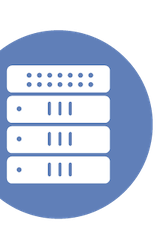Expanding Value with Broadcom WatchTower’s Metric Analysis
Event: Tech Field Day Extra at SHARE Cleveland 2025
Appearance: Broadcom Presents at Tech Field Day Extra at SHARE Cleveland 2025
Company: Broadcom
Video Links:
- Vimeo: Expanding Value with Broadcom WatchTower’s Metric Analysis
- YouTube: Expanding Value with Broadcom WatchTower’s Metric Analysis
Personnel: Machhindra Nale, Tom Quinn
At Tech Field Day Extra at SHARE Cleveland 2025, Broadcom presented their advancements in mainframe observability through the WatchTower platform, an evolution designed to improve how performance and optimization data is collected, correlated, and acted upon. The core problem addressed is that traditional domain-specific monitoring tools, like SysView for CICS or NetMaster for networks, operate in functional silos, leading to inefficiencies when diagnosing cross-domain performance issues. WatchTower eliminates this obstacle by aggregating and contextualizing alert data across different mainframe subsystems. As a result, users gain broader visibility through Alert and Contextual Insights—a holistic view that improves incident resolution speed and accuracy while making it easier to distinguish between isolated and system-wide failures.
One of the hallmark features of WatchTower is its intelligent dashboards, which provide both real-time and historical views across previously siloed data domains. These dashboards tap directly into established data collectors from key Broadcom tools such as Vantage, SysView, and NetMaster, ensuring that users can visualize telemetry data from CICS, DB2, MQ, IMS, and network components in one cohesive interface. The dashboards emphasize usability, allowing users to create custom views without writing complex queries. This flexibility accommodates both infrastructure-centric roles, like a CICS administrator, and higher-level application-focused personas. Complementing this visual capability is embedded machine learning (ML), which not only detects anomalies but tracks gradual performance degradations—informing users of potential issues before service level agreements (SLAs) are breached.
Broadcom’s ML Insights extends the usefulness of WatchTower by delivering proactive anomaly detection built on each organization’s unique dataset, rather than relying on static or generic thresholds. This approach tailors models dynamically based on ongoing operations, learning from historical patterns and adjusting its behavior to recognize events like seasonal peaks or daily load cycles. While immediate automation is not triggered by the platform directly, Broadcom allows integration with OpsMVS for customers who wish to design their own event-based playbooks or remediation rules. Although historical data cannot be retroactively loaded into the system at this time, WatchTower begins modeling from initial deployment onward, allowing it to curate dynamic baselines over time. These ML models, however, currently lack a formal feedback loop, though this capability is under consideration for future updates to further enhance adaptive learning.







